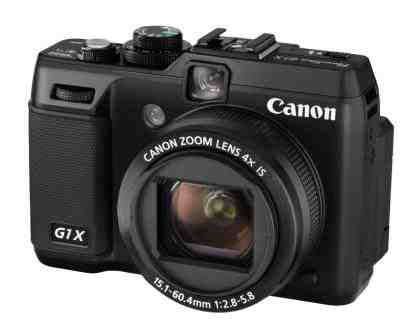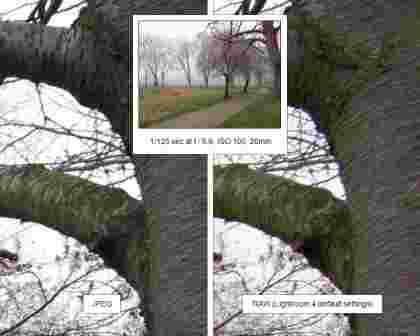Canon used to be a dominant force for premium compact cameras, but its PowerShot G-series has recently been overshadowed by compact system cameras (CSCs) such as the Panasonic Lumix G and Sony NEX ranges. Speculation was rife as to how Canon would respond, but we must admit that the answer, unveiled at CES earlier this year , took us by surprise.

The G1 X is a reboot of the PowerShot G range. Externally, it looks a lot like the G12 with its chunky body, multitude of dials and buttons, optical viewfinder, hotshoe and articulated screen. Inside,though, big changes are afoot. While the G12's 1/1.7in sensor is about 50 per cent bigger (by surface area) than the ones in budget compact cameras, the G1 X's sensor is about nine times bigger. At 18.7x14mm, it's a little bigger than the Micro Four Thirds sensors used by Panasonic and Olympus CSCs, and only slightly smaller than those used in Sony NEX cameras and consumer SLRs. Sensor size plays a critical role in determining image quality, as larger sensors capture more light and measure it more accurately, giving cleaner colours with less noise.

There’s the tiniest hint of noise in the background of this ISO 800 shot, but subtle skin tones are resolved with lots of detail - click to enlarge
Sure enough, image quality at fast ISO speeds is nothing short of stunning. Noise was barely perceptible in JPEGs at ISO 1600. Comparing ISO 6400 shots, it was lower than from all the CSCs we've reviewed with the exception of the Sony NEX-5N , which maintains a small lead. It even narrowly beat the best SLRs at this price, including the Canon EOS 600D and Nikon D5100 .

Respectable snaps at ISO 6400 are a stunning achievement for a compact camera - click to enlarge
This is a fantastic achievement for a compact camera, but at £700 and with Canon's name on the front, anything less would have been a disappointment. Our expectations for lens sharpness were less optimistic, though. Mounting a slim retractable lens in front of such a big sensor is a serious challenge, especially when it also has a 4x zoom, optical stabilisation and bright f/2.8 maximum aperture. Its f/5.8 aperture for telephoto shots isn't so impressive but this is still an extremely well specified lens.
We needn't have worried. Focus was extremely sharp, with just a tiny amount of corner softness at wide apertures and the subtlest hint of chromatic aberrations in wide-angle shots. Comparing JPEGs with raw output, it appears that Canon is finally using digital chromatic aberration removal for JPEGs – something other manufacturers have been doing for years. This correction won't be available for raw files until a profile for the G1 X’s lens has been added to Adobe Photoshop Lightroom 4 , but chromatic aberrations in raw files weren’t too bad anyway.

There are some chromatic aberrations in raw files, giving slight discoloration along high-contrast edges, but they’ve been digitally corrected in JPEGs - click to enlarge
Along with Canon's reliably excellent JPEG processing, this is the best image quality we've ever seen from a compact camera. Colours were rich yet natural, and there was lots of crisp detail without looking too over-processed. Noise reduction quality wasn’t far behind the results we achieved in Lightroom 4 with the associated raw file. Automatic exposures were sensibly judged, but it's a shame that the Auto ISO mode is so conservative. Its upper limit can be set to between 400 and 1600, but the camera can produce useful results way beyond 1600. Be prepared to use the manual ISO control in low light.
